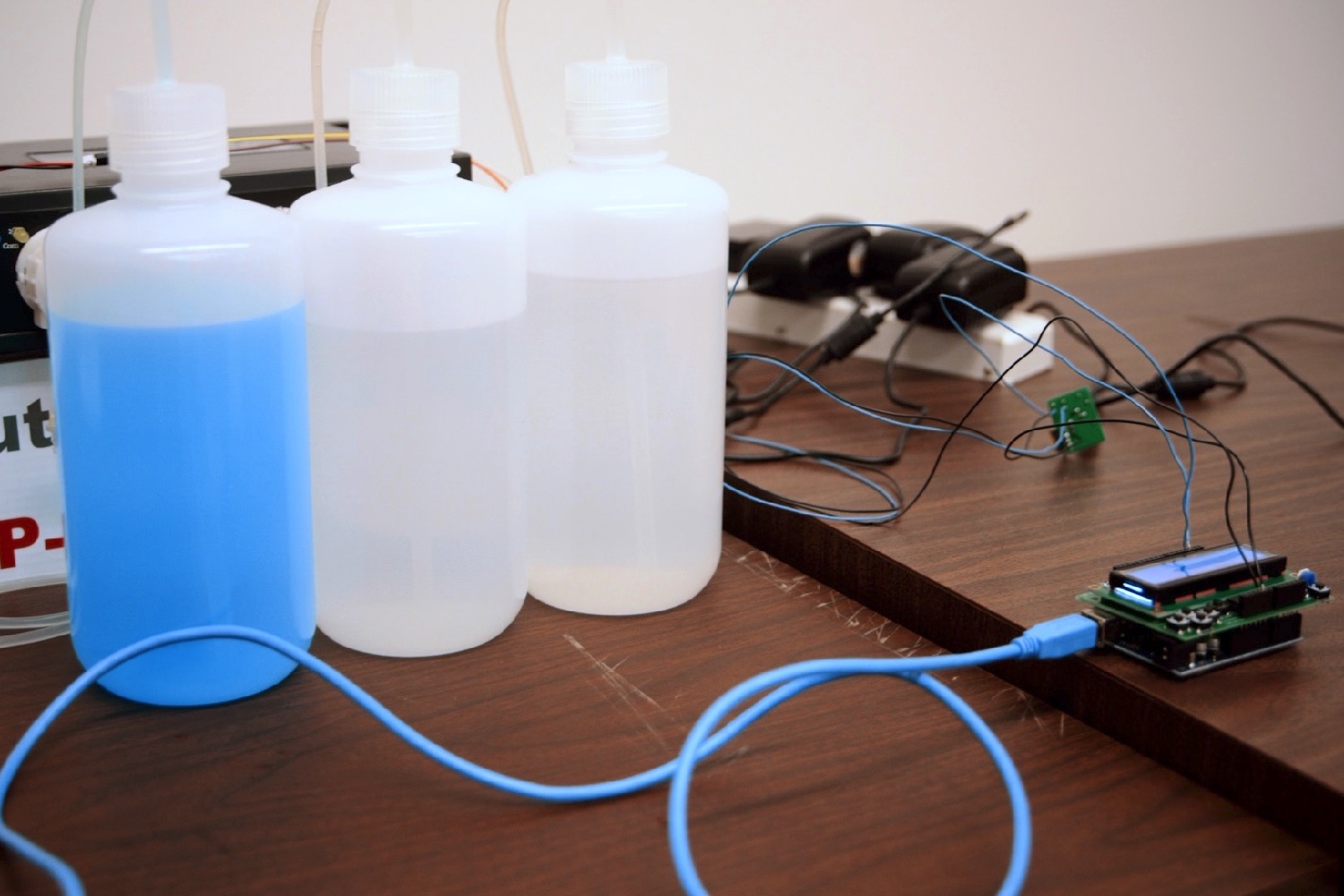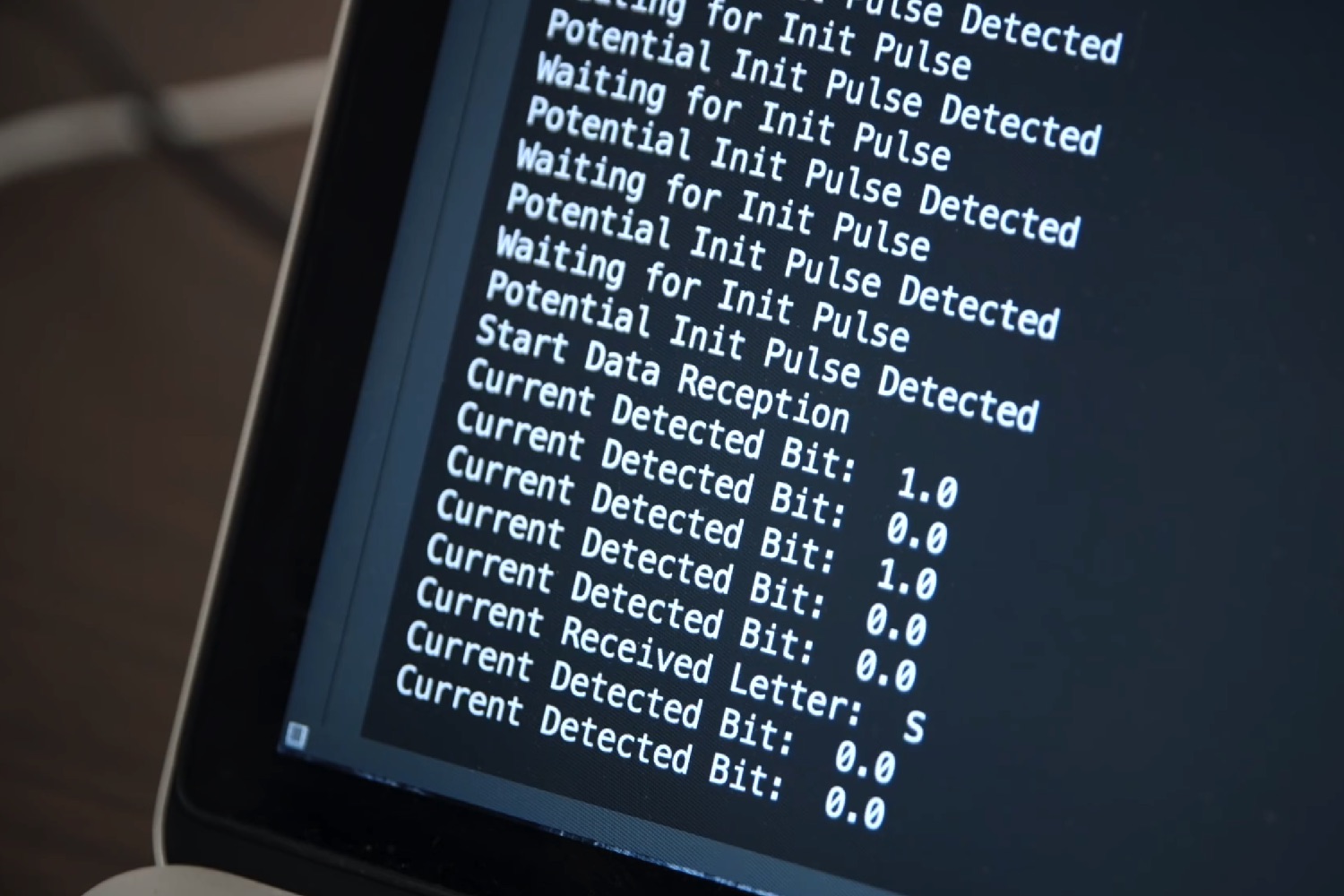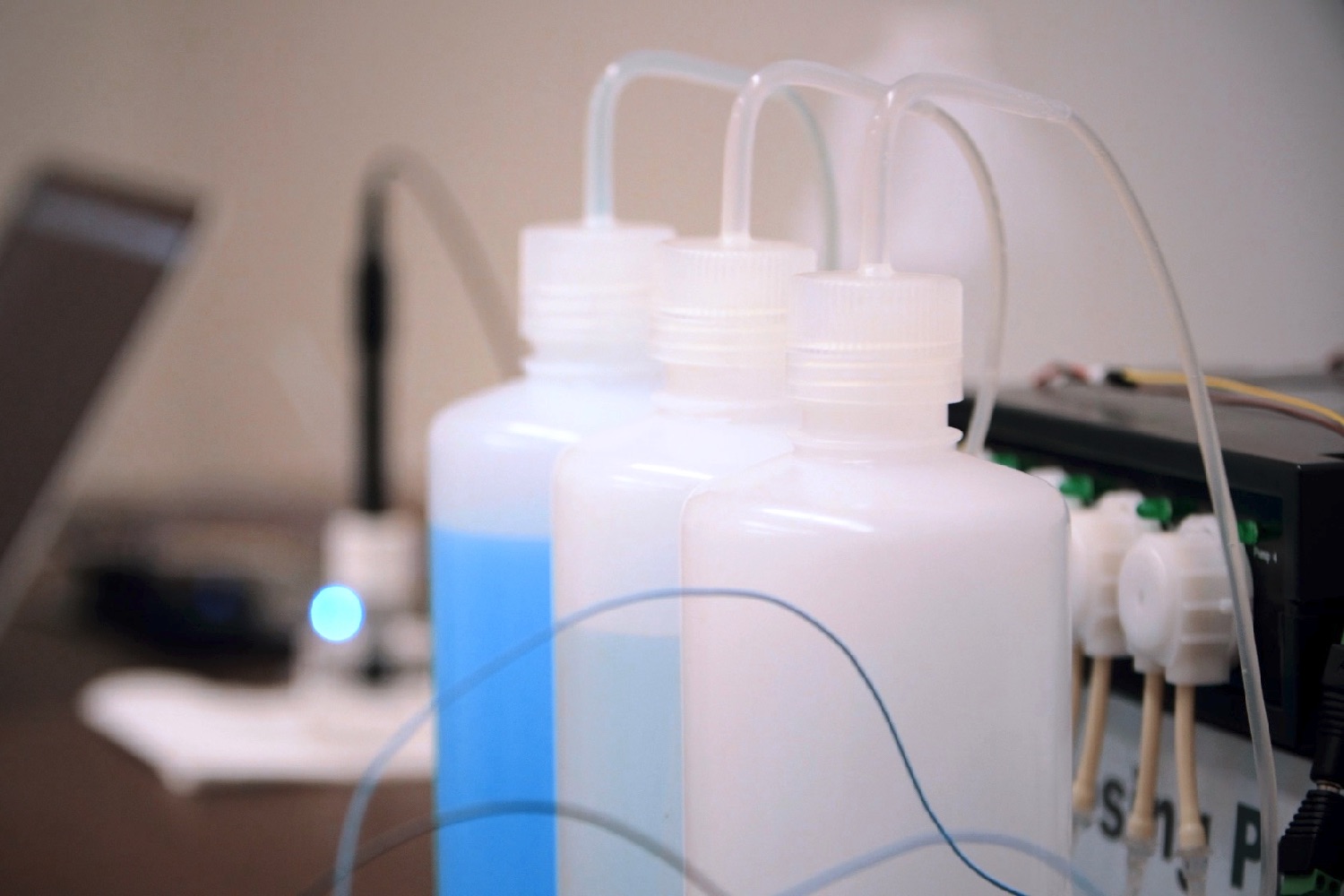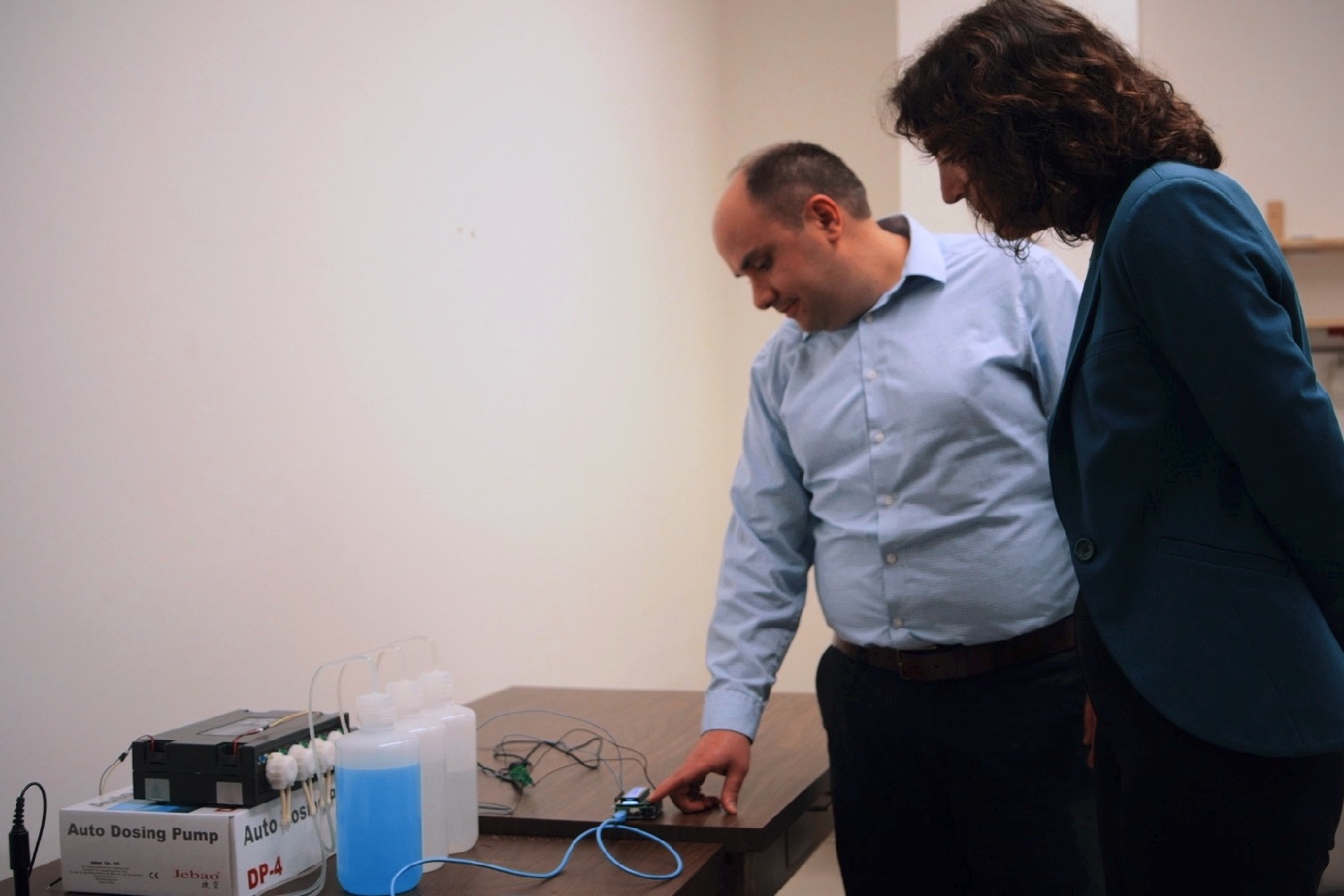The experiment works by having a computer send a signal to a machine which pumps out “bits” of chemicals, using the vinegar and glass cleaner as a substitute for the binary code of zeroes and ones. Once received, the messages are then deciphered thanks to a pH sensor.
“Our setup is similar in some ways to the work of Guglielmo Marconi on radio telegraphy, which laid the foundations for modern radio communication,” postdoctoral fellow Nariman Farsad told Digital Trends.
Back in 2013, at York University in Ontario, Canada, Farsad developed a platform which used vodka to transfer data over the air. Unfortunately, while it was an interesting experiment, the data rate was too small to be useful. Part of the problem, he noted, was that the alcohol released by the transmitter for communication remained in the environment and interfered with future transmissions. After a while, so much alcohol was in the system that it was hard to detect the chemical signals — a situation Farsad likened to getting drunk.
“This new system is much more advanced,” he said. “First, instead of over-the-air communication, we have communication inside small tubes [which] resemble a vein. Second, by using two chemicals that react, although the system becomes much more complex through sophisticated techniques, data can actually be transferred faster. Our data rate is 10 times higher than the alcohol setup, and the system is more reliable, which makes the system useful in many applications.”
So what kind of applications does Farsad think this could prove useful in? “Chemical communication can be used in applications where radio communication fails,” he explained.
One example, he said, could be in nanotechnology and synthetic biology where tiny devices, smaller than the width of a hair, are being developed to perform specific tasks such as detecting biomarkers for cancer. However, to unlock the true potential of these devices, they need to communicate and collaborate in swarms, as well as communicating their observations and data to users. This turns out to be a challenging task with regular radio communication, although chemical communication could provide a possible solution.
In similar scenarios, chemical communication wouldn’t just be more energy efficient than its traditional counterpart, but may prove more secure, too. “Chemical signals cannot be ‘overheard’ outside the body, or jamming signals cannot be used to interfere and interrupt the communication,” Farsad continued.
There’s even the possibility of having robots communicate by leaving chemical tags or trails, or point-of-care diagnostic chips which rely on chemical communication internally.
In short, while this technology remains novel, it opens up some exciting possibilities for the future.







